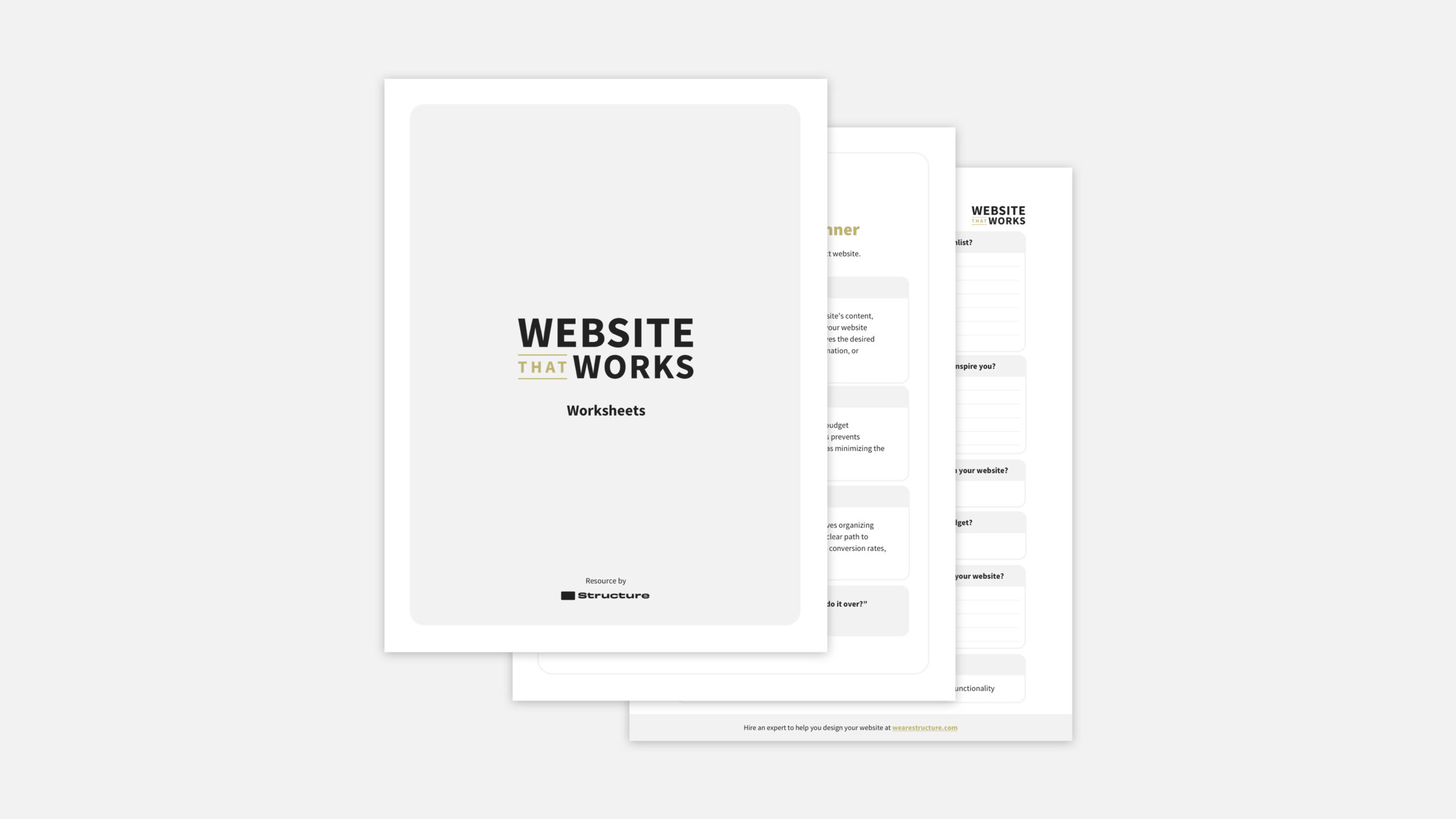
website planning template
Plan the Perfect Website with Our Free Template
Download our Website Design Planner to streamline your web design planning process and ensure a clear roadmap for your project.

Three things you’ll get with the
Structure website planning template
A path to a website that actually works
Most website planners are really just dressed-up spreadsheets that are boring and analytical. The Structure Website Planner is fun and helps you organize your goals and tasks to ensure you create the website you want.


A website you’re proud of
Every successful leader you know has been embarrassed by their website at one point or another and unsure what to do about it. You may feel embarrassed, but the Structure Website Planner will walk you through the exact steps needed to break through and create a site you’re proud of.

this template includes
A website design planning template to help you plan the perfect website
Imagine if your website generated as many leads, sales, and possibilities as you had hoped. Imagine how magnificent it would look if used to represent your business. What if it connected with your company’s systems and automatically processed data? A well-designed website can do all of these things. That’s why the best-performing, highest-converting, most attractive websites weren’t built overnight—they were planned.
- Goals Worksheet
- Team Worksheet
- Customer Journey Worksheet
- Sitemap Worksheet
- Business Systems Worksheet
- Wireframe Worksheet
download now
Get the Free Website Design Planning Template!
Enter your info below to download the Structure Website Planner worksheets.
Structure needs the contact information you provide to us to contact you about our products and services. You may unsubscribe from these communications at any time. For information on how to unsubscribe and our privacy practices and commitment to protecting your privacy, please review our Privacy Policy.
